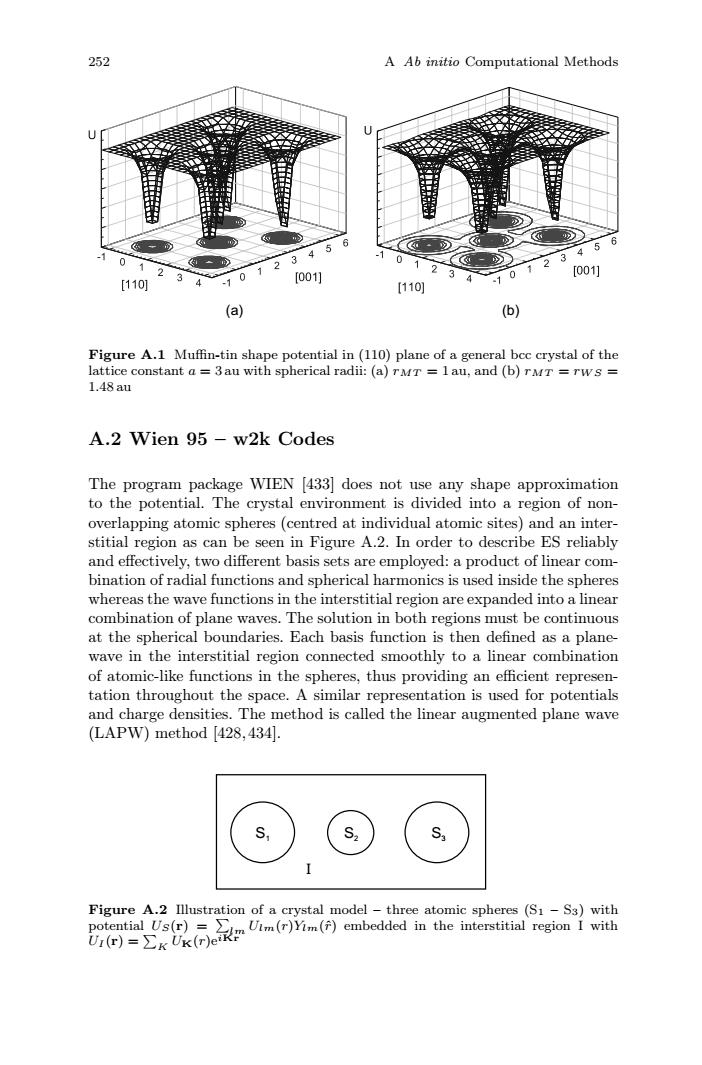正在加载图片...

252 A Ab initio Computational Methods 5 0 3 3 1012345 G- [001] [110] -7012 [001) 34 [110] (a) (b) Figure A.1 Muffin-tin shape potential in(110)plane of a general bcc crystal of the lattice constant a =3au with spherical radii:(a)rMT 1au,and (b)rMT =rws 1.48au A.2 Wien 95-w2k Codes The program package WIEN [433]does not use any shape approximation to the potential.The crystal environment is divided into a region of non- overlapping atomic spheres(centred at individual atomic sites)and an inter- stitial region as can be seen in Figure A.2.In order to describe ES reliably and effectively,two different basis sets are employed:a product of linear com- bination of radial functions and spherical harmonics is used inside the spheres whereas the wave functions in the interstitial region are expanded into a linear combination of plane waves.The solution in both regions must be continuous at the spherical boundaries.Each basis function is then defined as a plane- wave in the interstitial region connected smoothly to a linear combination of atomic-like functions in the spheres,thus providing an efficient represen- tation throughout the space.A similar representation is used for potentials and charge densities.The method is called the linear augmented plane wave (LAPW)method [428,434]. S Figure A.2 Illustration of a crystal model-three atomic spheres (S1-S3)with (embedded in the interstitial region I with252 A Ab initio Computational Methods (a) (b) Figure A.1 Muffin-tin shape potential in (110) plane of a general bcc crystal of the lattice constant a = 3 au with spherical radii: (a) rMT = 1 au, and (b) rMT = rW S = 1.48 au A.2 Wien 95 – w2k Codes The program package WIEN [433] does not use any shape approximation to the potential. The crystal environment is divided into a region of nonoverlapping atomic spheres (centred at individual atomic sites) and an interstitial region as can be seen in Figure A.2. In order to describe ES reliably and effectively, two different basis sets are employed: a product of linear combination of radial functions and spherical harmonics is used inside the spheres whereas the wave functions in the interstitial region are expanded into a linear combination of plane waves. The solution in both regions must be continuous at the spherical boundaries. Each basis function is then defined as a planewave in the interstitial region connected smoothly to a linear combination of atomic-like functions in the spheres, thus providing an efficient representation throughout the space. A similar representation is used for potentials and charge densities. The method is called the linear augmented plane wave (LAPW) method [428, 434]. S1 S2 S3 I Figure A.2 Illustration of a crystal model – three atomic spheres (S1 – S3) with potential US(r) = 2 lm Ulm(r)Ylm(ˆr) embedded in the interstitial region I with UI (r) = 2 K UK(r)eiKr